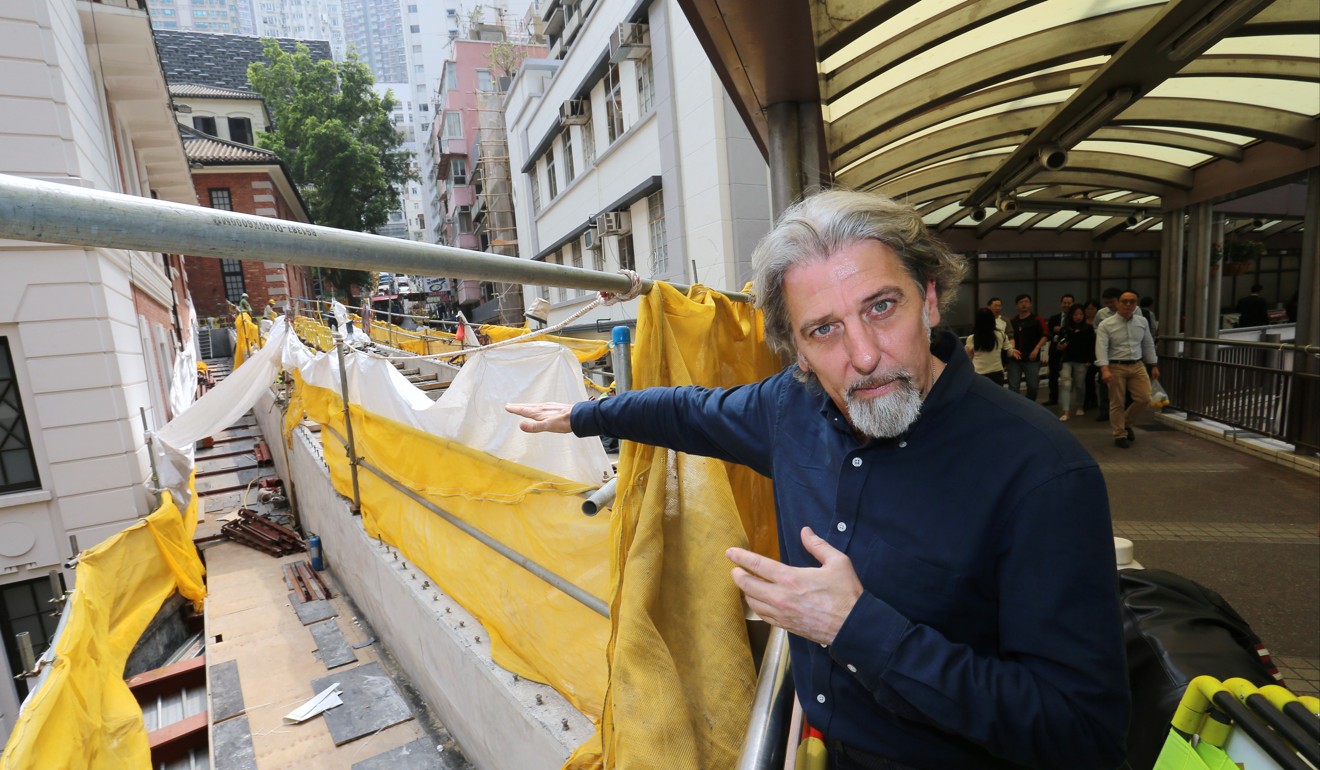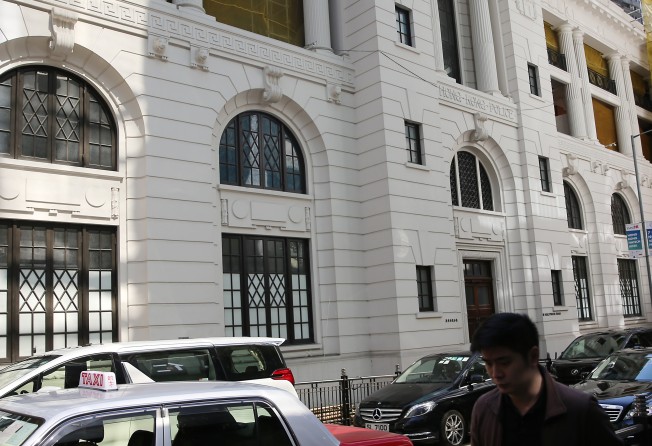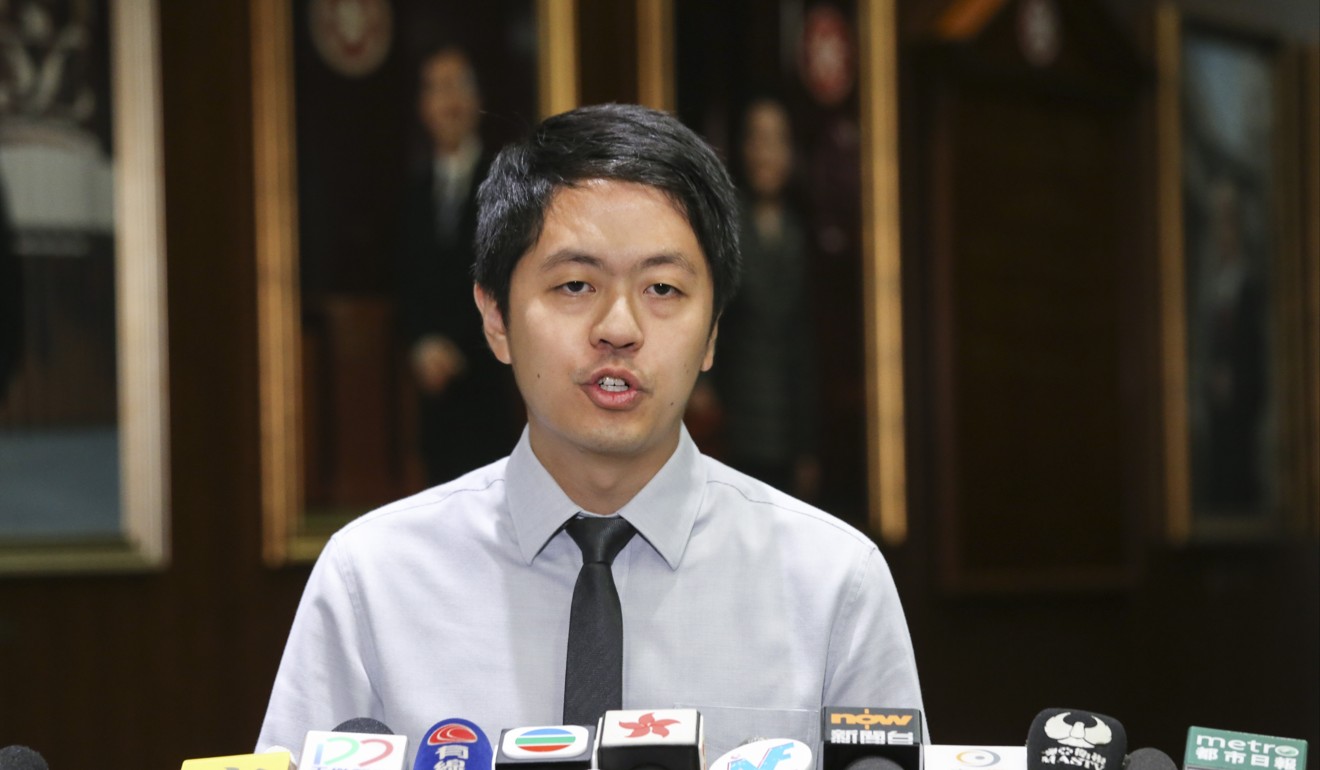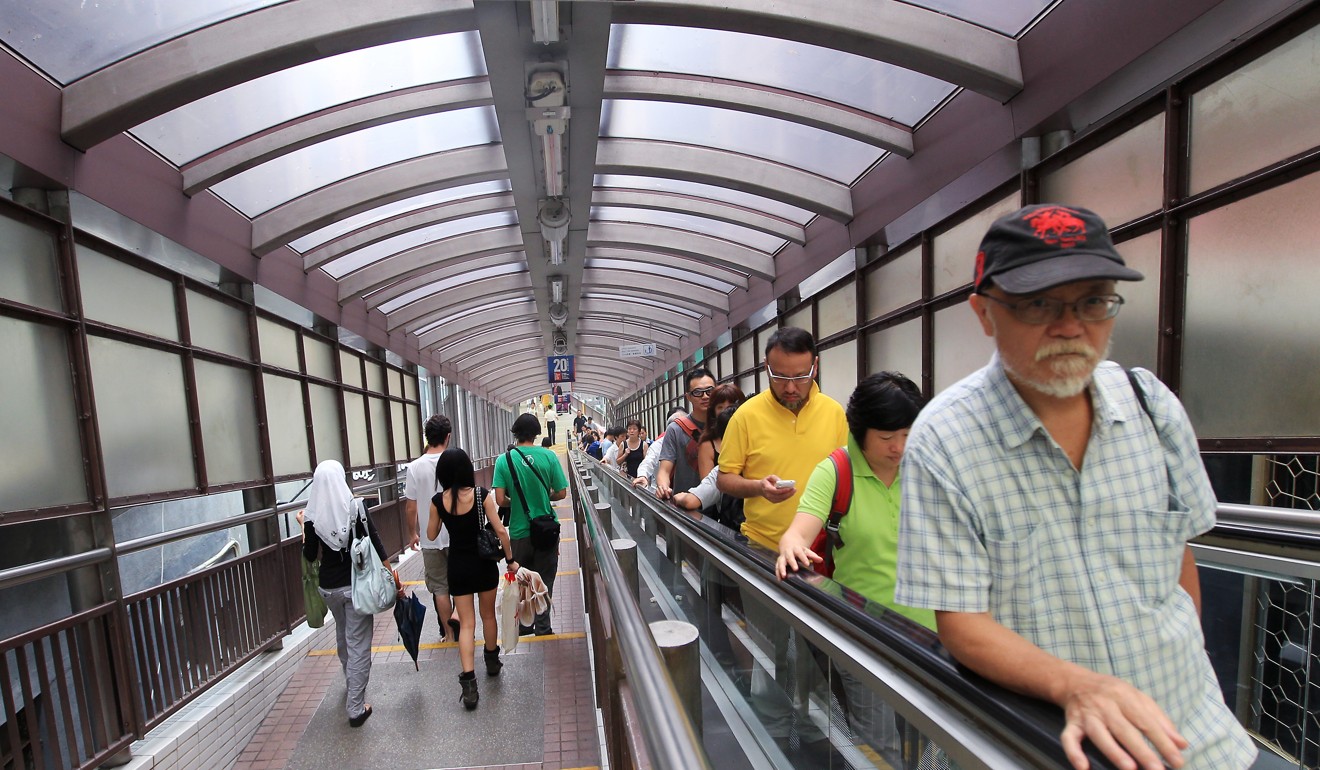
Residents fear huge influx of visitors when historic Hong Kong police station compound reopens
Politicians, planners and locals express concerns that an already packed area will come to a standstill when the site opens as an arts and heritage centre

The impending reopening of the former Central Police Station compound as a heritage centre has stoked concerns of further overcrowding in one of Hong Kong’s busiest and most historic districts.
Politicians, planners and local residents have told of their concerns after the Post learned that the compound was expected to open in late May.
They also urged the Hong Kong Jockey Club, which is in charge of the HK$1.8 billion (US$229 million) project, and the government to release an assessment of how the opening of the compound, colloquially known as Tai Kwun or Big Station, would affect the roads and walkways in Central.

“The area around [the compound], especially Hollywood Road, has been full of cars and people,” Stephen Chan Chit-kwai, a Central and Western District Council member, said.
“We have reason to believe that the opening of [the compound] will bring in more traffic … Hollywood Road could be jam-packed by then.”
Hong Kong, with a population of 7.3 million, was expected to welcome over 60 million tourists this year.
The compound is on Hollywood Road, which runs through Central’s Mid-Levels, one of Hong Kong’s most touristy areas with numerous historic buildings, old neighbourhoods and trendy restaurants on its narrow and hilly streets.
When the former Police Married Quarters, just three blocks away, reopened in 2014 as an art centre, adding another attraction, locals complained about increasing numbers of tour buses and visitors swarming through the area’s streets. Illegal parking had long been an issue in the district also.
The government built an 800-metre (2,600-foot) escalator and walkway system in 1993 to ease ground-level traffic. But the structure, rising 135 meters (440 feet), has also become a tourist attraction and is known as the world’s longest outdoor covered escalator link.
According to the latest figures, the escalator carried about 78,000 pedestrians every day in 2016.

A Transport Department spokesman said most visitors taking the escalator to the compound would enter somewhere between the bottom and Hollywood Road. This section, he said, carried some 5,200 people during the peak hour from noon to 1pm.
He said the Jockey Club had conducted a traffic assessment, which found that some 7,000 pedestrians would enter the system during the peak hour after the compound’s opening, still lower than the section’s designed capacity of 8,500 people per hour.
He added that the assessment found the compound would also attract 60 more cars and 3,400 more people per hour during the lunch and evening peaks. But he did not give figures on the existing traffic conditions.
“The [assessment] concluded that the project would not have a significant impact on the road junctions in the vicinity,” he said, adding that potential effects could be mitigated by measures such as a three-metre (10-foot) wide extension of the escalator system leading into the compound.
A club spokeswoman said the government had approved its assessment and mitigation measures.
“We will make a public announcement on traffic arrangements upon works completion and government approvals for [the compound’s opening],” she said.
Democratic Party lawmaker Ted Hui Chi-fung, who is also a Central district councillor, called on the government and the club to release the assessment as soon as possible so the public could get a full picture of the traffic impact.
He said the club admitted to the district council that most visitors were likely to use the escalator, which he believed had been running near its capacity.
“The government needs to be very cautious if more people add to the escalator’s load,” Hui said. “The escalator has been in use for over 20 years and has broken down frequently lately.”
Ryan Chan Chi-ming, who goes to work near the compound every day, said: “I really don’t want the escalator to become more crowded. It’s already very crammed. When you try to go up the escalator around noon, a whole load of tourists are packed in front of you.”

Paul Zimmerman, co-founder of urban planning advocacy group Designing Hong Kong, said Central would only become more crowded with the government’s effort to promote the district as a heritage tourist attraction and more historic building revitalisation projects such as Central Market to be completed in coming years.
“Ultimately, the only way to resolve this is to make sure that the whole of Central becomes more walkable at street level,” he said.

This would involve building additional large car parks along the spacious motorways near the waterfront, limiting the amount of time vehicles could stay in Central and Mid-Levels, improving the pavements and pedestrianising most of the district, Zimmerman said.
Ultimately, drivers would need to park outside the area and walk in, and shops would either need to take deliveries at night or pay workers to wheel goods uphill during the day, he added.
The Transport Department has not responded on whether it had conducted any traffic assessment in Central, taking into consideration the rising number of tourist attractions.